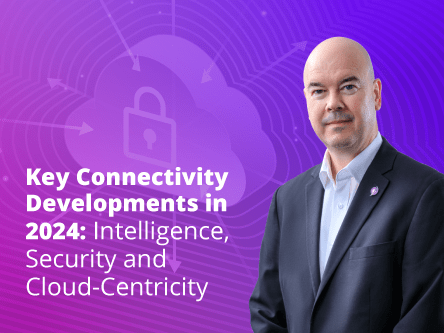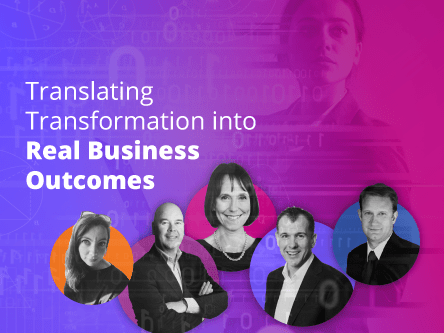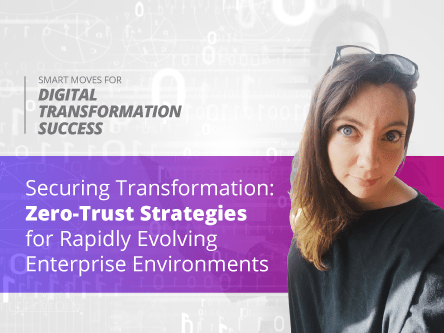Doing Digital Transformation well is tough. Realising the potential value that it can add to an organisation in practice requires engagement at a technology, process, and cultural level.
One of the challenges with Digital Transformation is the term itself.
It can mean anything from automating some processes for short-term tactical wins, up to fully equipping a business to operate digitally. In this article, we are looking at the latter – transformation that integrates digital technology into all aspects of an enterprise, fundamentally changing how it operates and delivers value to its customers.
To be effective, this form of Digital Transformation needs to involve reimagining business processes, strategies, commercial models, value propositions, and the way people work. Only by taking this approach can organisations leverage the capabilities of digital technologies, and meet the evolving needs of increasingly competitive markets and more discerning customers.
Scenario planning is critical to successful Digital Transformation. An organisation needs a strong understanding of the impact that transformation will have, and be ready to access its value. The Six Sigma methodology for business process improvement is a powerful tool that can help the successful transition from Digital Transformation to Digital Operations.
Bringing Digital into the Day-to-Day
“Digital Operations” refers to the day-to-day use of digital technologies, data-driven processes, and new practices that come together to make a business more productive, competitive, and attractive to its customers.
They focus on improving efficiency, agility, and accuracy through the integration of various technologies such as automation, analytics, artificial intelligence, cloud computing, and the Internet of Things (IoT).
One of the reasons that Digital Transformation falls over when it becomes operational is that something has been overlooked. It might be a downstream process, or a team that is impacted in unexpected ways. These hiccoughs can compromise Digital Transformation success and the value that an organisation can gain from it. A holistic approach is essential.
Six Sigma’s structured approach of defining, measuring, analysing, improving, and controlling the design and implementation of Digital Transformation can help to reduce errors, as well as facilitate engagement across an entire business. The key six sigma principles are as follows:
- Customer focus
- Use data
- Improve continuously
- Involve people
- Be thorough
These can be applied to either the Six Sigma DMAIC or Six Sigma DMADV improvement methodologies. DMAIC (define, measure, analyze, improve, control) is used to correct a process that already exists, whereas DMADV (define, measure, analyse, design, validate) is used to create a new process.
As well as the Six Sigma methodology, there are some other key areas that can help digital transformation morph successfully into digital operations:
Strategy and Vision
Digital Transformation needs a clear vision and strategy for how technology will be integrated across an enterprise. This includes setting goals for improved operational efficiency, customer experience, and innovation.
Process Redesign
It is important to assess existing processes and workflows to identify areas where digital technologies can deliver improvements. This might involve automating manual tasks, optimising supply chains, or enhancing collaboration.
Technology Adoption
Successful adoption means bringing people with you. It is easy to become so focused on the technologies that need to be adopted and integrated, that the impact of change on the workforce is overlooked. All Digital Transformation and Digital Operations initiatives need a cultural and people workstream for change to be adopted.
Data Strategies and Data Use
Clean and relevant data is the fuel for effective digital operations. Today’s technologies make data gathering easy. The core issue is that dirty data costs money, efficiency, and business agility. Every Digital Transformation programme needs a robust data strategy that informs effective data usage once the transformation has become operational.
Automation
Process automation is broadly straight forward. The trap to avoid is automating sub-optimal processes. Always determine how a process can be improved before automating it. Otherwise, inefficiencies will be systemised and scaled. When this happens, it can be very hard to reverse.
Customer-Centricity
Improved customer centricity is one of the most important benefits of Digital Transformation. This is why it is essential to design the customer experience your organisation wants to deliver first, and then source the technologies to enable it. Just thinking about how automated call queues can frustrate customers illustrates the impact of putting technology first and experience second.
Continuous Improvement
Some wise words from one of my early mentors in business – “you get what you measure, so measure what you want”. Deciding how to measure and improve the value of Digital Transformation and subsequent operations is a board-level issue. It is crucial that everyone involved in leading the organisation understands how they benefit, and what they need to do to keep those benefits coming.
Security and Compliance
More digitalisation and data will lead to more exposure to cyber threats and compliance risks. Cyber criminals have become so sophisticated that it is worth considering how an enterprise can work with expert cybersecurity service providers to mitigate risk. I call this ‘dynamic risk management’. It means having a strategy and operational plan that defines which risks need to be managed and mitigated in-house, and which will benefit from outsourcing to a supplier with a robust service level agreement. This can decrease your company’s risk exposure and help with insurance too.
The Road to Success
Digital Transformation is not easy, but it doesn’t need to cause headaches.
By taking the time to put together a plan of action, with an expert methodology behind it, you can set yourself up for the road ahead
However, the true key to Digital Transformation success comes from thinking about the transformation as a whole, beyond just technology, and beyond the short-term goal.
The best transformation success stories come from the companies that see transformation as a continual process, with the agility to pivot and adapt at the pace of today’s changing business environment.
Author: Dr Lucy Green | CEO, Larato
Keen to find out more? Join us at our exclusive CXO Networking Event to explore the process of bringing digital into your daily operations. Click the event banner below to reserve your seat now.








